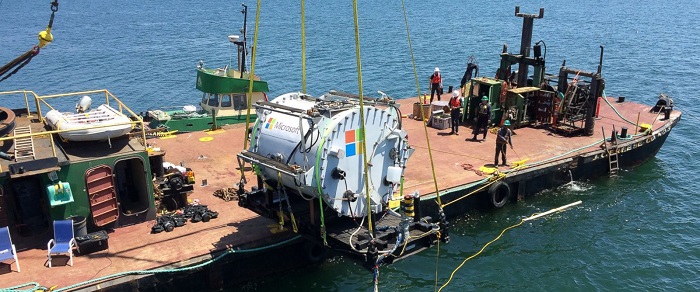In hopes of discovering a more efficient way to store data, Microsoft has turned to the sea — specifically, it’s looking to house data centers in the world’s oceans as part of an initiative called Project Natick.

The company recently resurfaced its first underwater data center — named Leona Philpot after a character in an Xbox game. It’s since been taken back to Microsoft’s Redmond headquarters for analysis.
Microsoft explained the reasons why the company believes Project Natick will succeed are two-fold. First, half the world’s population lives within 125 of the coast, so storing data centers in the sea would reduce latency, or the time it takes for data to travel from the storage center to customers.
Second is the environment. By putting data centers in the ocean, the need for cooling is eliminated. What’s more, should they be teamed with offshore renewable energy sources, future data centers could very well produce zero emissions. This alone would be a significant achievement — it is estimated that data centers today consume nearly 3% of the world’s electricity.
In terms of the recently concluded Leona Philpot experiment, the data center operated a little over half a mile off the California coast from August to December 2015. It was encased in steel and outfitted with sensors to monitor environmental conditions.
Worth noting are similar efforts put forth by other tech companies, which includes the transferring of company data centers over to countries with colder climates. Facebook, for example, opened a data center in Lulea, Sweden three years ago. It’s in a small mining town about 70 miles from the Arctic Circle, and Facebook occupies 84 acres for the purpose of housing tens of thousands of computers servers.
Perhaps most impressive — everything is run on renewable energy generated by lcoal hydroelectric schemes.
Via the BBC
Advertisement
Learn more about Electronic Products Magazine





